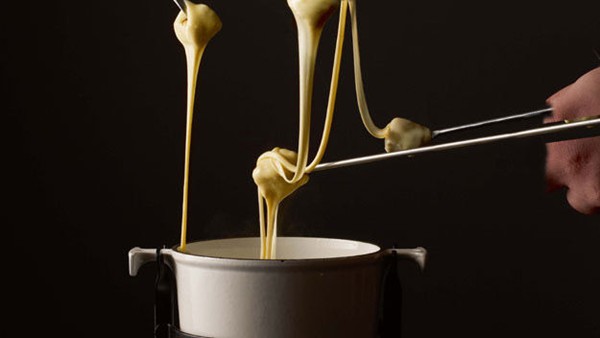How to pick the perfect melting cheese
February 12, 2020 by DarcieWhile most recipes in the EYB Library that call for cheese specify a particular variety, sometimes you will come across one that tells you to use your favorite “melting cheese”. You might wonder which cheese is best suited for the purpose. The varieties that immediately come to mind are mozzarella and American cheese, both considered to be a “melting” cheese but that are not alike in any other respect. There is a world of other cheese to consider, too, so how do you decide which to use? Head over to the San Antonio Express News, where Justin Ward penned a primer on the science of melting cheese.

Ward notes that cheese is composed primarily of four components: water, protein, fat and acid. Two of those – fat and water – are the keys that determine whether a cheese will melt well. So, just look for a high fat and/or high water content cheese and you’ll be set, right? Not quite, as there is a bit more to the equation.
There are other characteristics at work. You’ve no doubt noticed that some cheeses become stretchy when melted (mozzarella, for example), while others tend to be more creamy. To confound things further, not all cheese that has high fat or high moisture will be great at melting. The acid level in the cheese also plays a role in determining how it will (or won’t) melt under heat. The article also explains how adding other ingredients will help coax better melting out of some kinds of cheese.
Photo of Cheese fondue from Channel 4 by Heston Blumenthal
Categories
- All Posts (7075)
- Antipasto (2205)
- Author Articles (250)
- Book News (944)
- Cookbook Giveaways (996)
- Cookbook Lovers (262)
- Cooking Tips (116)
- Culinary News (299)
- Food Biz People (558)
- Food Online (800)
- Holidays & Celebrations (277)
- New Cookbooks (154)
- Recipes (1520)
- Shelf Life With Susie (231)
- What's New on EYB (134)
Archives
Latest Comments
- Indio32 on Four outstanding independently published cookbooks worth your attention
- nvernon on Four outstanding independently published cookbooks worth your attention
- fayegibson on Four outstanding independently published cookbooks worth your attention
- Pizzacat13 on Balli Balli – Cookbook Giveaway and Quick Bites
- Laura1 on For the Love of Lemons by Letitia Clark – Giveaway
- fms95032 on For the Love of Lemons by Letitia Clark – Giveaway
- fms95032 on 20 Amici – 40 Ricette Cookbook Giveaway
- fms95032 on French at Heart – Cookbook Giveaway
- Shelmar on Tea innovations
- dzm on 20 Amici – 40 Ricette Cookbook Giveaway